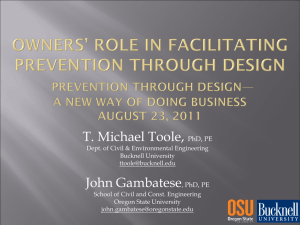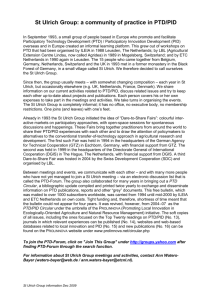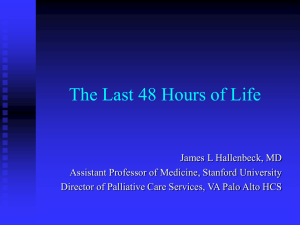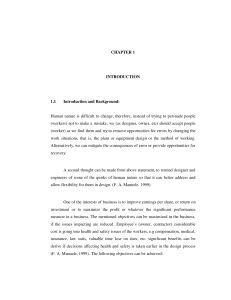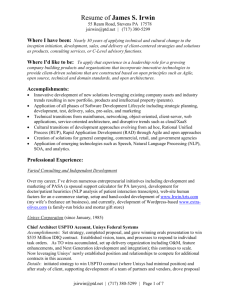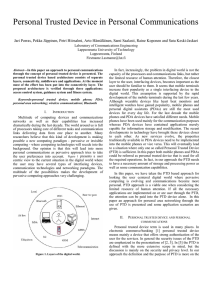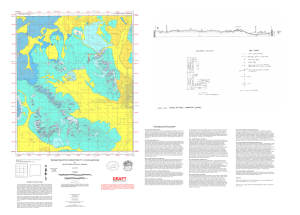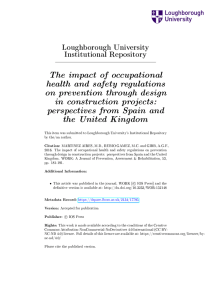Engineering Construction Site Safety
advertisement
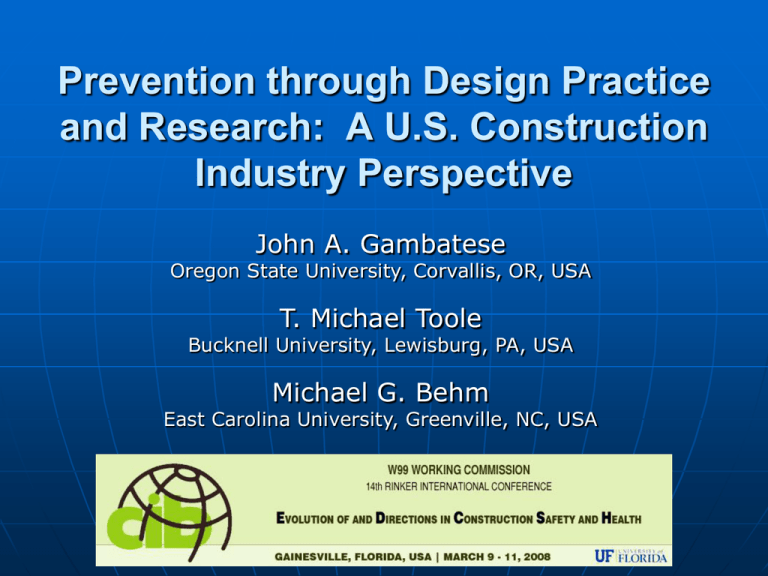
Prevention through Design Practice and Research: A U.S. Construction Industry Perspective John A. Gambatese Oregon State University, Corvallis, OR, USA T. Michael Toole Bucknell University, Lewisburg, PA, USA Michael G. Behm East Carolina University, Greenville, NC, USA What is Prevention through Design (PtD)? The process of addressing construction site safety and health in a project’s design. • • • • Construction site safety as a design criterion Focus on the design of the permanent facility “Safety constructability” Designing for construction safety (DfCS) PtD is not: • Specifying means and methods of construction • Control of, or responsibility for, safety on the construction site PtD in the U.S. Interest in PtD is growing, but PtD is currently not part of standard practice Barriers: • • • • • OSHA’s placement of safety responsibility Designer education and training Lack of design tools, guidelines, procedures Designer’s limited role on the project team Designer’s traditional viewpoint on construction worker safety • Lack of understanding of the associated liability • Absence of legislative mandate National Initiatives OSHA • Construction Alliance Roundtable DfCS Workgroup NIOSH • NORA Construction Sector Council CHPtD Workgroup • Prevention through Design National Workshop (July 2007) NIOSH Workshop Kick-off for national PtD initiative Gathered together leaders in PtD in all industries • 225 participants Results to form strategy for national initiative Focus groups organized by: • Industry (Construction, Manufacturing, etc.) • Function (Research, Policy, Practice, Education) Construction Sector Needs PtD Practice: • Availability of tools and resources • Address liability exposure • Increased awareness Case studies Link to sustainability Construction Sector Needs PtD Policy: • Define what PtD means to construction • Modify standard contracts • Regulatory changes not desired Construction Sector Needs PtD Education: • Continuing education Offered through professional organizations • University education Need to engage faculty Industry Advisory Board input • Development of teaching and educational resources Research Needs Economic/business case for PtD • Determine economic impact of PtD • Determine impact on other project criteria: Productivity, quality, etc. • Assessments should consider human, environmental, and social costs and benefits • Development of cost-benefit model Research Needs Design-related causality of occupational injuries and illnesses • How to assess design-related causality • Connection between specific design features and worker safety and health • Needed to conduct the research: Better surveillance data Consider both injury frequency and severity Accidents Linked to Design1,2 22% of 226 injuries that occurred from 2000-2002 in Oregon, WA, and CA 42% of 224 fatalities in the U.S. between 1990-2003 In Europe, a 1991 study concluded that 60% of fatal accidents resulted in part from decisions made before sitework began. 1 Behm, “Linking Construction Fatalities to the Design for Construction Safety Concept”, 2005 2 European Foundation for the Improvement of Living and Working Conditions Research Needs Development of PtD devices, tools, and processes • Investigate and develop new designs • Include input from: Workers Manufacturers Research Needs Worker, machine, structure, and environment interaction • How to design to account for human interaction with machines and their work environment • Address workplace dynamics and organizational culture • Can be conducted through ethnographic studies • Investigate maintenance through lifecycle Research Needs Diffusion, sustainability, and communication of design innovations • What avenues are available for diffusion • How to measure effectiveness • Determine what drives design community • Incorporate global perspective Research Needs Methodologies for PtD research • How to account for confounding factors • Develop metrics and measures of performance • Identify performance benchmarks Research Needs Leveraging methods and technologies from other industry sectors • Identify PtD practices in each industry sector • Evaluate transferability • Create clearinghouse of PtD information Roadmap for PtD Input from all affected parties • Design, construction, clients, professional organizations, legal counsel, regulatory agencies, etc. Look outside construction and U.S. Communication of need for PtD Resources to support PtD Training and education Change in mindset/culture Prevention through Design Practice and Research: A U.S. Construction Industry Perspective Questions? Comments? For more information: • john.gambatese@oregonstate.edu • ttoole@bucknell.edu • behmm@ecu.edu

